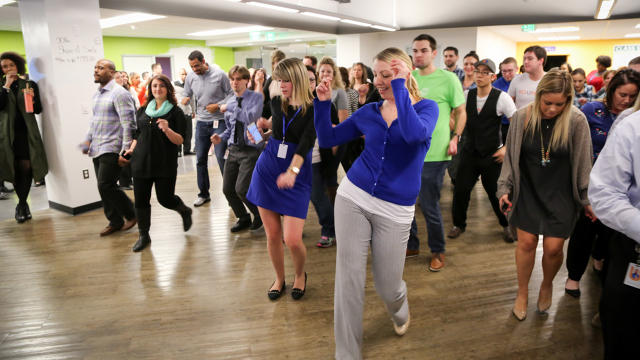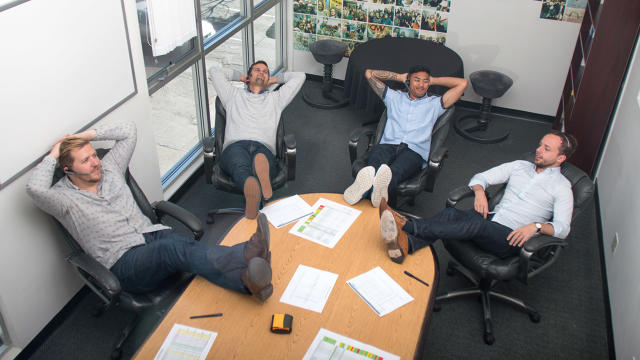
If your mind starts to wander and you could really use a nap or a candy bar around 2 p.m., you’re not alone. The afternoon slump is real, and it’s your body’s response to a drop in your blood-sugar levels as well as its natural circadian rhythm. In fact, one of our strongest biological urges to sleep comes between 1 p.m. and 3 p.m., according to the National Sleep Foundation.
Taking the afternoon off isn’t usually an option, but some companies have found some fun and effective hacks for tackling the afternoon slump.

1. Dance Parties
Employees at the mortgage lender United Shore look forward to 10-minute dance parties held every Thursday afternoon at 3 p.m. The idea began as a small gathering of five or six people and became so popular that the company installed a dance floor on the second floor to accommodate a crowd of more than 100.
“We have a lot of team members at United Shore who work from their desks and are focused on hitting their daily goals,” says CEO Mat Ishbia. “The dance parties give them a little break to get up, reenergize themselves and get back to their day. That energy helps us stay focused.”
Ishbia says dance parties also boost morale: “I think it’s inspiring when company leadership can tell their team, ‘What you’re doing is really important, but take a break and have some fun,’” he says.

2. Exercise
If you visit the New York office of J Public Relations in the afternoon, you might have to look down to find the employees. Around 4 p.m., the entire team hits the floor for a one-minute plank. “We like to get everyone up from their desks, get blood flowing, and bring us all together for a quick group activity,” says Amy Ogden, vice president of brand development. “This is less about hard abs and more about consciously coming together and breaking away from our computers.”
At the plant-based eating platform Lighter, the entire team participates in “brain breaks” that consist of three minutes of three different exercises. During the process, team members often come up with solutions to problems they have been trying to conquer. Physically stretching the body makes the team more creative, and helps the brainstorming process become more flexible, too, say cofounder and director of nourishment Micah Risk.

3. Fresh Air
Employees at the real estate software firm BoomTown are encouraged to get away from their desks and get outside for some fresh air. The company has a patio with tables and umbrellas where team members can take their laptops and work. They’re also encouraged to take one of the office dogs to the nearby dog park.
At the marketing agency Day One, team members head outside for a “walk and talk” with one of the company’s three founding partners. Inspired by Mark Zuckerberg’s walking meetings held at Facebook, the activity gets employees outside for some fresh air. “This week our walk and talks have also included some Pokémon chasing,” says senior account executive Lauren Sachs.

4. Power Poses
Employees of headset retailer Headsets.com go to the company conference room most afternoons to spread out—literally. The team practices Harvard Business School professor Amy Cuddy’s power-pose theory, which involves expanding your body by spreading out your arms or legs or leaning back in a chair and putting up your feet to feel a mental state of interpersonal power. In her research, Cuddy found that participants who did held the pose for a few minutes felt more powerful. In addition, their levels of cortisol (the hormone that causes stress) went down while testosterone levels increased.
“It’s fun, provides for different small talk, and we think the science works, but who cares?” says CEO Mike Faith.
5. Trivia
Employees at the Boston-based marketing firm Schneider Associates beat the afternoon slump by gathering for quick round of trivia questions based on news and current events. “This helps us to reenergize for the afternoon in a fun way that also serves as an opportunity for us to talk about news that relates to or impacts our clients,” says Leah Gallagher, account supervisor. “Oftentimes, these trivia sessions lead to really great brainstorms.”
From: Fast Company
